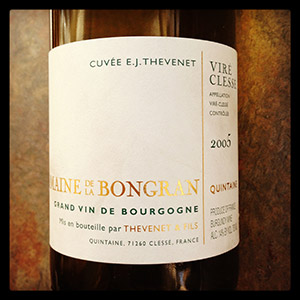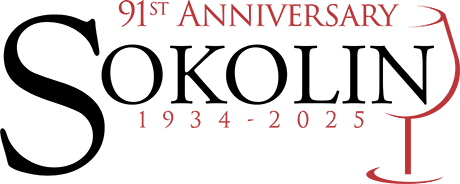

Its soils can be similar to Nuits and Beaune containing limestone and alkaline clay, but not as integral to a specific slope, with flat farmlands mixed in among the vineyards. It lies furthest south of the five sub-regions and therefore, has a slightly warmer climate. These factors combined lend to simpler wines with a focus on fruit, but much less minerality and depth. However, if you were to enjoy a bottle of 2005 Domaine de la Bongran Vire Clesse with me you wouldn't think this at all!
Jean Thevenet is the current owner and winemaker at Domaine de la Bongran and one of the handful of people credited with first implementing 'organic', 'minimal' and 'natural' techniques in the early 80s. His family's name was originally Gillet, and they are tied to the estate going back to the 15th century. The original Bongran estate was slightly smaller than it currently is, but Jean's father realizing the terroir's potential bought some surrounding parcels in exchange for other flatland property.
Vire Clesse is an Appellation d'Origine Controlee (AOC) recognized in 1998 and decreed in 1999 that replaced former white-wine producing AOCs Macon-Clesse and Macon-Vire. By law, the name of the climat from which the wine comes from may appear below Vire Clesse on the label, and in Bongran's case it is Quintaine, arguably one of the best of the area. Originally also by law, the maximum amount for residual sugar in a wine was 3 grams per liter. Because of the superb location of the vines on the slopes of Quintaine that allow the grapes to mature much later than others in the area, Thevenet's wines often contained RS levels higher than allowed and could not be classified as Vire Clesse. In essence, his wines weren't considered typical of the region, being richer, fuller and more complex.
I recently enjoyed a bottle of the 2005 Vire Clesse Cuvee E.J. Thevenet and can confirm it is all of this! A musk of buttered popcorn, burnt rubber and stones wafted from the glass of the deep gold wine. A mélange of flavors appeared including apple and pear, peaches in syrup, orange marmalade, tropical lifesavers, honeysuckle, mineral, and hints of spice. And just enough acidity was present in this rich wine to bring balance.
Domaine de la Bongran holds back releasing wine until it begins showing mature characteristics, so 2005 is actually the current release. So place this in a tasting among other maturing premier cru wines from more prestigious sub-regions and impress your friends with its $33.99 price tag. Or do what chefs and sommeliers at fine restaurants around the world do and savor it paired with richer seafood or poultry dishes. Whichever way you choose I know you'll enjoy!
